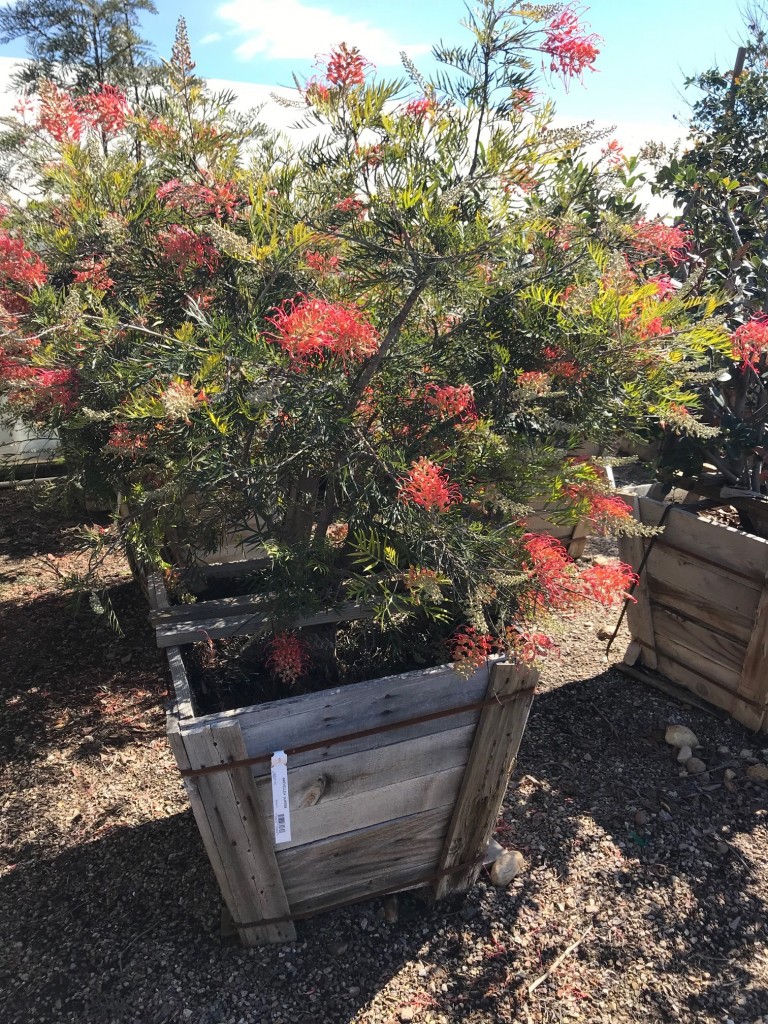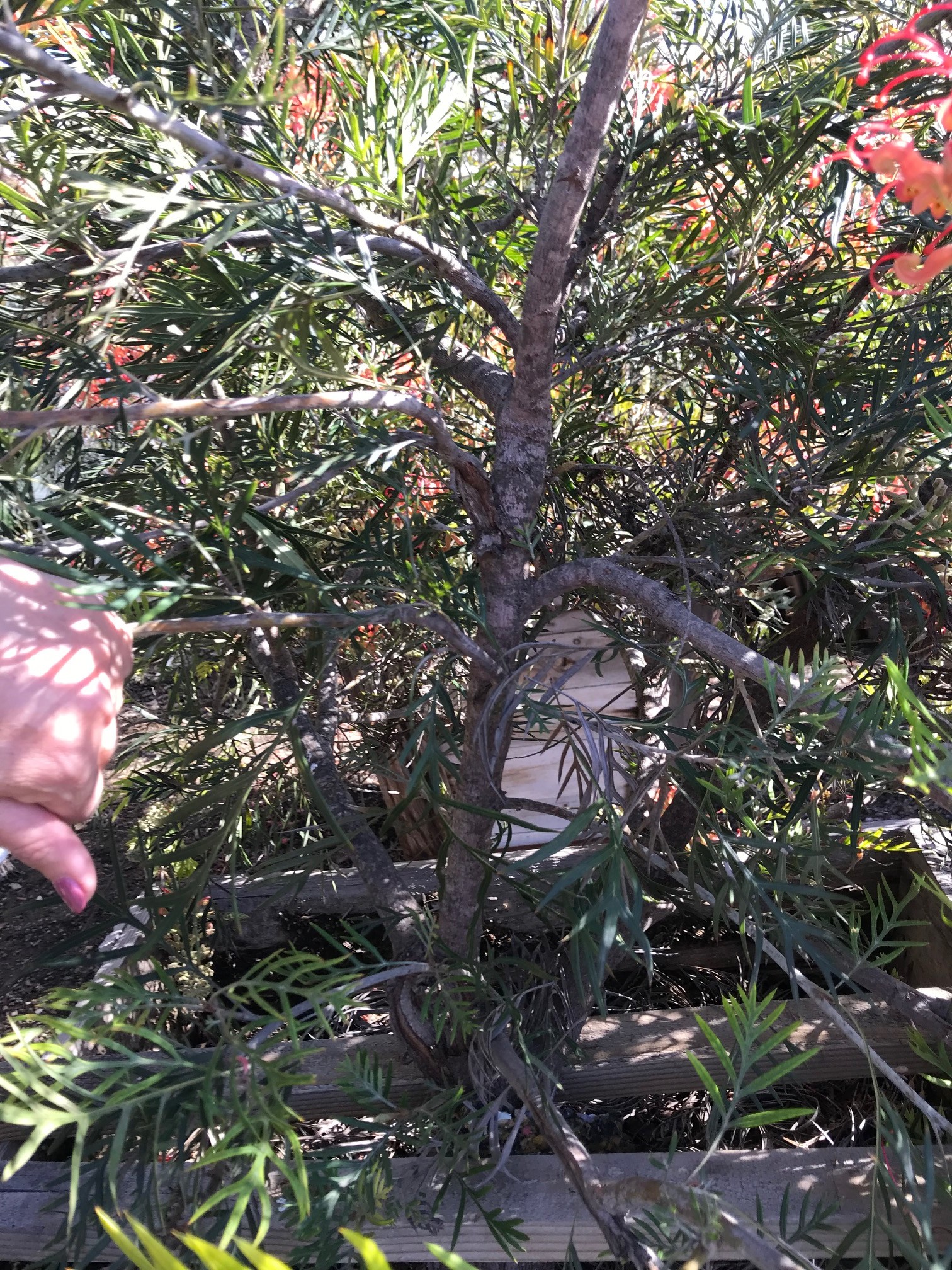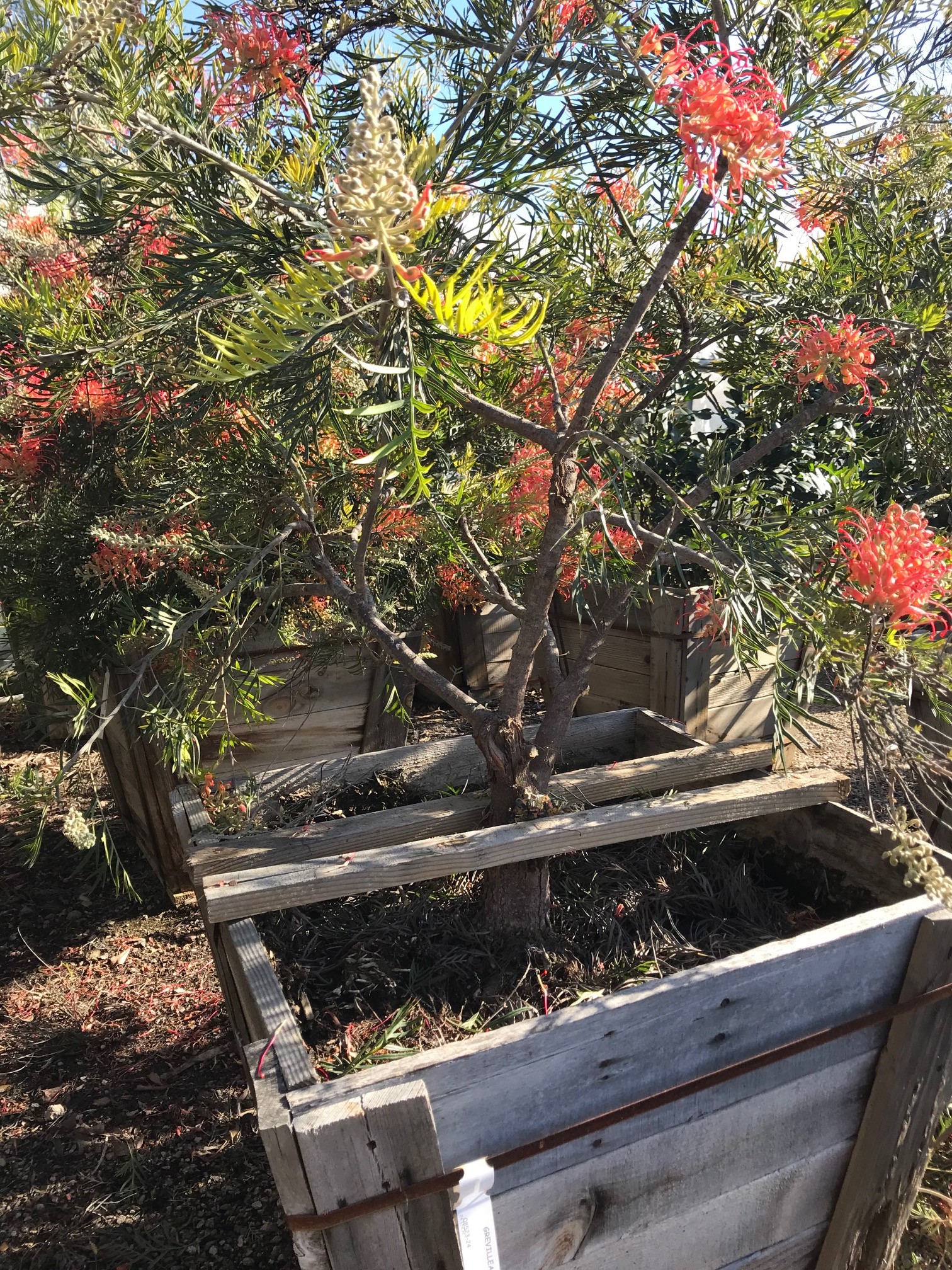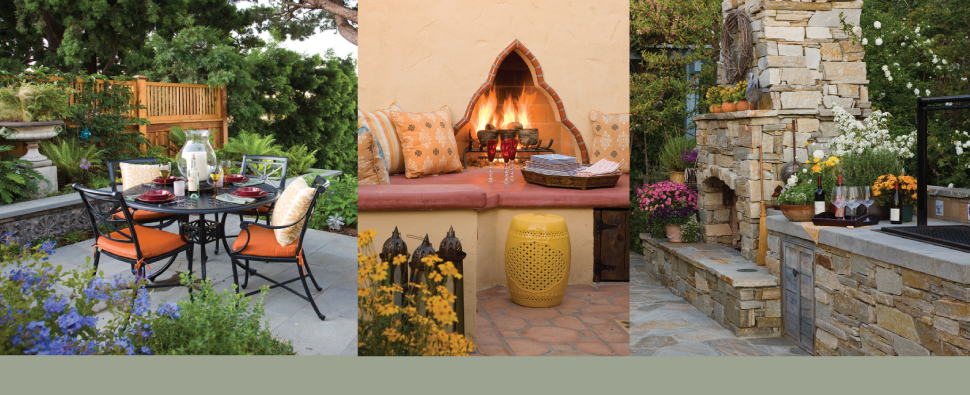Small trees in large planter pots look great as a focal point in the landscape, but full-size trees are much too large and will quickly outgrow their pots. So what do you do? I like to start with a large but bushy plant and trim it into a tree shape.
This is a really showy plant to start with, Grevillea ‘Superb’. Here it is in a 24 inch box looking like a big bush:

This is me pulling back some of the foliage so you can see into the interior. It has a nice branch structure, so I can tell it will make a nice looking tree.

And here it is after I pruned it, ready to go into its planter:

So, what do you do if you want to try this for yourself? You can do it in a few easy steps. Step one is to take off the bottom 1/3 of the foliage from the entire plant. This will expose what will become the trunk of your tree (or maybe multiple trunks). Take off any tiny branches or leaves that are growing directly off the trunks. Step two is to lace out the top of the tree. To do this, take out any small branches that crisscross each other or any of that are growing straight up into the air.
That’s it! When you are finished, you will have a miniature tree ready to go.

















